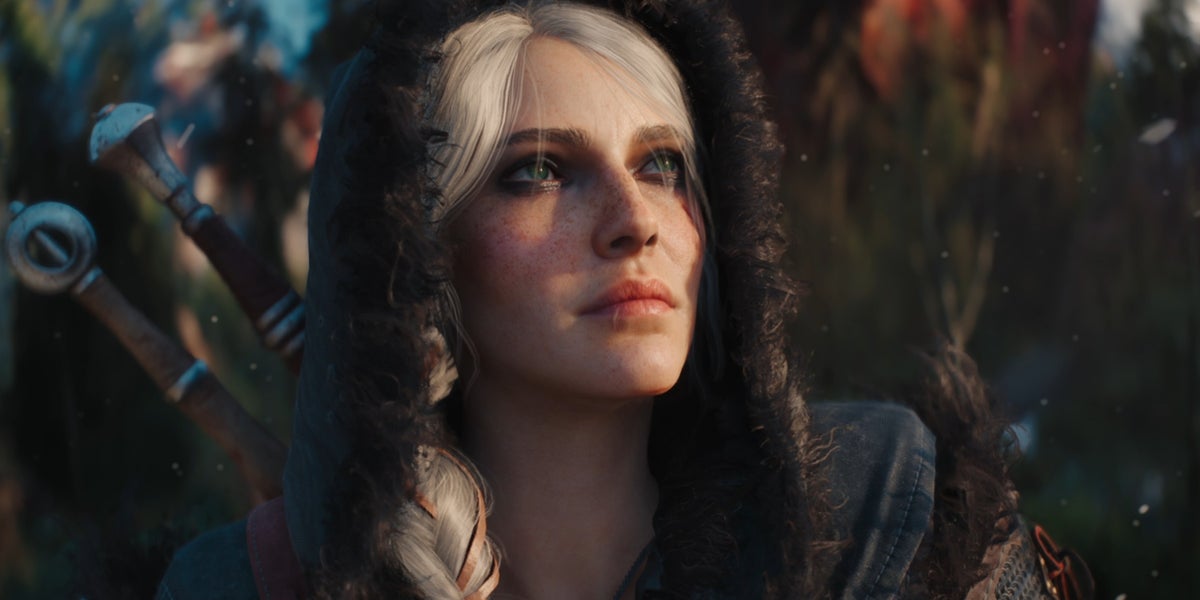CD Projekt Red Clarifies “The Witcher 4” Unreal Engine 5 Showcase Was a Tech Demo, Not Gameplay
Introduction
The gaming community was recently treated to a stunning visual showcase of “The Witcher 4” during the State of Unreal 2025 event. The demo, built using Unreal Engine 5, displayed breathtaking environments, detailed characters, and advanced technical features. However, amidst the excitement, CD Projekt Red (CDPR) has clarified that the presentation was a tech demo and not actual gameplay footage from the upcoming game. This article delves into the details of the tech demo, the reasons behind CDPR’s clarification, and what it means for the future of “The Witcher 4.”
The Unreal Engine 5 Tech Demo: A Visual Feast
The tech demo offered a glimpse into the world of “The Witcher 4,” showcasing the capabilities of Unreal Engine 5. Key highlights of the demo included:
- New Region: Kovir: The demo introduced the never-before-seen region of Kovir, a land of rugged landscapes and bustling trade cities, adding a fresh setting to the Witcher universe.
- Protagonist Ciri: The demo featured Ciri, the main protagonist of the new Witcher saga, as she navigates a dangerous monster contract, blending CDPR’s signature storytelling with cutting-edge technology.
- Advanced Character Models: The character models for Ciri and her horse, Kelpie, were particularly impressive, displaying intricate details and realistic movements.
- Dense Foliage: Unreal Engine 5’s Nanite Foliage technology was on full display, rendering incredibly detailed and realistic trees and vegetation without compromising performance.
- Dynamic Crowds: The demo showcased towns teeming with responsive NPCs, with scenes featuring over 300 individually animated characters, creating a lively and immersive environment.
- Performance: The demo ran smoothly on a PlayStation 5 at 60 frames per second with ray tracing enabled, demonstrating the potential for high-fidelity graphics on current-generation consoles.
- Fast Geometry Streaming: The tech allowed seamless loading of environments, from snowy mountaintops to deep valleys, without stuttering or object pop-ins, enhancing the open-world experience.
- ML Deformer: The machine learning technology allowed elements like Kelpie’s muscles to move and flex accurately, adding realism to character movements without impacting performance.
CD Projekt Red’s Clarification: Setting Expectations
Despite the overwhelmingly positive response to the tech demo, CD Projekt Red was quick to clarify that it was not representative of actual gameplay. In a statement to VGC, a CDPR spokesperson emphasized, “This is a tech demo, and a first look at the cutting-edge technology powering ‘The Witcher 4’ – but not ‘The Witcher 4’ itself.”
The primary reasons behind this clarification are:
- Focus on Technology: The demo’s main objective was to showcase the technological foundation being built in collaboration with Epic Games to push open-world design further than ever before.
- Early Stage of Development: “The Witcher 4” is still in the early stages of production, and the visuals in the tech demo do not fully represent the final game.
- Managing Expectations: CDPR aims to manage player expectations and avoid potential disappointment by ensuring that fans understand the demo’s purpose.
Why Unreal Engine 5?
CD Projekt Red’s decision to use Unreal Engine 5 for “The Witcher 4” marks a significant shift from their previous in-house REDengine. The benefits of this transition include:
- Enhanced Open-World Capabilities: Unreal Engine 5 provides robust tools and features specifically designed for creating expansive and dynamic open worlds.
- Collaboration with Epic Games: The partnership with Epic Games allows CDPR to leverage Epic’s expertise and resources in engine development, leading to more innovative solutions.
- Industry-Wide Benefits: The tools and technologies developed during this collaboration will be shared with the wider video game development community through Unreal Engine 5, benefiting the entire industry.
Key Technologies Showcased
The tech demo highlighted several key Unreal Engine 5 technologies that will play a crucial role in shaping “The Witcher 4”:
- Nanite Foliage: This technology allows artists to render incredibly detailed and realistic trees and vegetation with high density and fidelity, without compromising performance.
- Fast Geometry Streaming: This feature enables seamless loading of large open-world environments, preventing stuttering and pop-ins, and ensuring a smooth player experience.
- ML Deformer: This machine learning-based tool enhances character animation by accurately simulating muscle movements and deformations, adding a new level of realism.
- MetaHuman Technology: The demo showcased MetaHuman technology for creating realistic and responsive NPCs, making towns and cities feel more alive and dynamic.
- Unreal Animation Framework (UAF): This framework powers realistic character movements, even in busy scenes with numerous NPCs, contributing to a more immersive world.
Kovir: A New Frontier
The introduction of Kovir as a key location in “The Witcher 4” expands the game’s lore and offers new possibilities for storytelling and exploration. Key features of Kovir include:
- Unique Environment: Kovir is a rugged land with snow-capped mountains, dense forests, and a distinct aesthetic that sets it apart from other regions in the Witcher universe.
- Trading Hubs: Cities in Kovir are built on trade and maintain a careful distance from the military conflicts that plague the rest of the north, offering a different cultural dynamic.
- Lan Exeter: The demo provided a glimpse of Lan Exeter, the winter capital and a major port city in Kovir, hinting at the scale and detail of the game’s urban environments.
Implications for “The Witcher 4”
While the tech demo may not represent the final product, it provides valuable insights into the direction CD Projekt Red is taking with “The Witcher 4”. Key takeaways include:
- Visual Fidelity: The game aims to be one of the most visually advanced role-playing games to date, leveraging the power of Unreal Engine 5 to create stunning environments and characters.
- Immersive Open World: CDPR is focused on creating a more immersive and dynamic open world, with responsive NPCs, seamless environment loading, and realistic character animations.
- Technological Innovation: The collaboration with Epic Games is driving innovation in open-world game development, with new tools and features that will benefit both “The Witcher 4” and the wider industry.
Target Platforms and Release
CD Projekt Red has not yet announced a release date for “The Witcher 4,” but based on previous statements, the game is not expected to launch before 2027. The tech demo was running on a PlayStation 5, suggesting that the game will be available on current-generation consoles. However, given the long development timeline, it is also possible that “The Witcher 4” could be released on next-generation consoles.
Conclusion
The Unreal Engine 5 tech demo for “The Witcher 4” offered an exciting glimpse into the future of the franchise, showcasing the potential of cutting-edge technology to create immersive and visually stunning open-world experiences. While CD Projekt Red has clarified that the demo is not representative of actual gameplay, it provides valuable insights into the game’s direction and the ambitious goals of the development team. As fans eagerly await more news about “The Witcher 4,” the tech demo serves as a reminder of the incredible possibilities that lie ahead.

